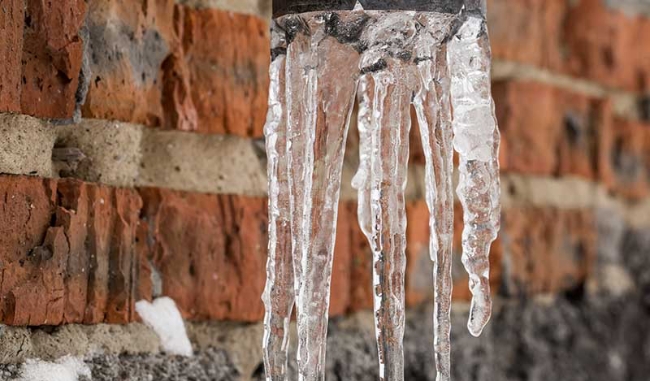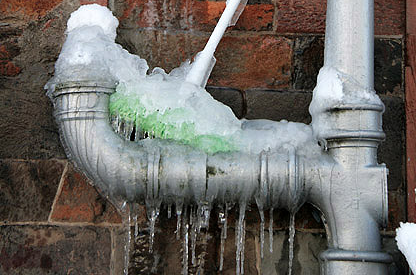How to Prevent Frozen Pipes in Winter: Expert Advice
How to Prevent Frozen Pipes in Winter: Expert Advice
Blog Article
Right here underneath you can locate a bunch of excellent expertise on the subject of Winter Plumbing Precautions: Preventing Frozen Pipes.

Winter can wreak havoc on your plumbing, especially by freezing pipes. Below's how to avoid it from occurring and what to do if it does.
Intro
As temperature levels decline, the threat of frozen pipes rises, possibly causing pricey repairs and water damage. Comprehending just how to prevent icy pipes is important for property owners in chilly climates.
Recognizing Icy Pipelines
What causes pipes to ice up?
Pipelines freeze when revealed to temperatures below 32 ° F (0 ° C) for expanded periods. As water inside the pipes freezes, it expands, taxing the pipe wall surfaces and possibly triggering them to burst.
Dangers and problems
Frozen pipelines can cause supply of water interruptions, residential or commercial property damage, and pricey repairs. Ruptured pipelines can flood homes and cause comprehensive architectural damage.
Indications of Frozen Piping
Identifying frozen pipes early can prevent them from rupturing.
Exactly how to recognize icy pipelines
Look for reduced water flow from taps, uncommon odors or sounds from pipelines, and visible frost on revealed pipelines.
Avoidance Tips
Protecting at risk pipes
Wrap pipes in insulation sleeves or utilize warm tape to secure them from freezing temperature levels. Concentrate on pipes in unheated or outside locations of the home.
Home heating techniques
Keep indoor rooms effectively warmed, especially locations with plumbing. Open cupboard doors to enable cozy air to distribute around pipelines under sinks.
Securing Outside Pipes
Yard tubes and exterior taps
Detach and drain pipes garden hose pipes before winter months. Mount frost-proof faucets or cover outdoor faucets with insulated caps.
What to Do If Your Pipelines Freeze
Immediate activities to take
If you suspect icy pipes, keep faucets available to alleviate pressure as the ice melts. Utilize a hairdryer or towels soaked in warm water to thaw pipes gradually.
Long-Term Solutions
Structural changes
Consider rerouting pipes away from outside walls or unheated locations. Add added insulation to attics, basements, and crawl spaces.
Upgrading insulation
Purchase premium insulation for pipelines, attics, and walls. Correct insulation aids keep consistent temperature levels and minimizes the danger of icy pipes.
Conclusion
Stopping frozen pipelines requires positive actions and quick feedbacks. By comprehending the reasons, indications, and preventive measures, homeowners can protect their plumbing throughout winter.
6 Proven Ways to Prevent Frozen Pipes and Protect Your Home
Disconnect and Drain Garden Hoses
Before winter arrives, start by disconnecting your garden hoses and draining any remaining water. Close the shut-off valves that supply outdoor hose bibs and leave the outdoor faucet open to allow any residual water to drain. For extra protection, consider using faucet covers throughout the colder months. It’s also important to drain water from any sprinkler supply lines following the manufacturer’s directions.
Insulate Exposed Pipes
Insulating your pipes is an effective way to prevent freezing. Pipe insulation is readily available at home improvement stores and is relatively inexpensive. Pay close attention to pipes in unheated areas such as the attic, basement, crawl spaces, or garage. Apply foam insulation generously to create a buffer against the cold. You can also wrap your pipes in heat tape or thermostat-controlled heat cables for added warmth.
Seal Air Leaks
Inspect your home for any cracks or openings that could let in cold air. Seal any holes around the piping in interior or exterior walls, as well as the sill plates where your home rests on its foundation. Additionally, make sure to keep your garage door closed unless you’re entering or exiting. Leaving it open creates a significant air leak that can lead to frozen pipes.
Allow Warm Air Circulation
During cold snaps, it’s essential to allow warm air to circulate evenly throughout your home. Leave interior doors ajar to promote better airflow. Open kitchen and bathroom cabinets to help distribute heat consistently around the rooms. If you have small children or pets, be sure to remove any household chemicals or potentially harmful cleaners from open cabinets for safety.
Let Faucets Drip
A small trickle of water can make a big difference in preventing ice formation inside your pipes. When temperatures drop significantly, start a drip of water from all faucets served by exposed pipes. This continuous flow helps prevent the water from freezing. Additionally, running a few faucets slightly can relieve pressure inside the pipes, reducing the chances of a rupture if the water inside does freeze.
https://choateshvac.com/6-proven-ways-to-prevent-frozen-pipes-and-protect-your-home/

We had been shown that editorial about How to prepare your home plumbing for winter weather from a good friend on a different site. Liked our entry? Please quickly share it. Let another person locate it. Thanks for taking the time to read it.
Estimate Report this page